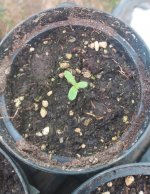funkyhorse
Well-known member
For this 2022/23 season the first project is searching/discovering Zamal genetics
In this side by side grow there will be 9 different genetics coming from 3 different breeders consisting of polyhybrids, hybrids and pure races
It seems in the canna world breeders think the best is polyhybrids. All most famous breeders release their stock in the form of polyhybrid, so I have to assume breeders think is the best.
Proof is in the pudding
In this side by side grow there will be 9 different genetics coming from 3 different breeders consisting of polyhybrids, hybrids and pure races
It seems in the canna world breeders think the best is polyhybrids. All most famous breeders release their stock in the form of polyhybrid, so I have to assume breeders think is the best.
Proof is in the pudding





